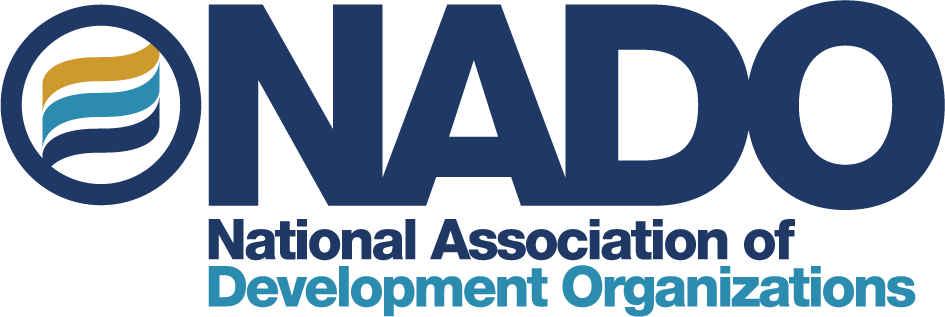
This case study was researched and written by Parrish Bergquist, NADO Research Foundation Graduate Fellow.
In 1975, the first shopping mall in Rome, Georgia, opened. Residents flocked to the new development, beginning a story of demise common to so many of America’s downtowns. Rome’s downtown anchors lost out to strip commercial development, out-migration, and stagflation, and by 1981 the downtown vacancy rate had reached 26%. Still, with the largest Victorian-era downtown district in Georgia, Rome’s residents value their heritage. When the National Main Street Program came to Georgia in 1980, residents perked up.
In 1981 Rome received Main Street city designation and ever since has applied the National Main Street Network’s approach to historic preservation and downtown revitalization. Through the 1980s and 90s, the City of Rome and Floyd County invested in public facilities to promote downtown as a destination for residential and commercial development. In 1986, the City and downtown businesses overhauled Broad Street—downtown Rome’s main drag—by adding a median and street trees. By 1997, the City and County had accessed almost $40 million in local, Federal, State, and other funding sources to invest in public improvements including combined sewer overflow replacement, police facility, Forum civic center, and library. During the same time period, downtown Rome’s City, County, and school district tax revenues increased by 500%, from almost $200,000 to almost $1 million annually (according to a 1997 study by the Georgia Municipal Association, “Office of Downtown Development Downtown Tax Base Study”).
According to Ann Arnold from the City of Rome’s Downtown Development Authority (DDA), that public investment beginning in the ‘80s set the stage for private developers to reinvest in downtown. Arnold recalls, “The City and County really stepped up and took the lead, and then we had more private investment.”
 Residential and commercial redevelopment began when Georgia’s Department of Community Affairs (DCA) launched a Downtown Development Revolving Loan Fund (DDRLF) in 2000. Through the DDRLF, the state loans up to $250,000 for a downtown redevelopment project, at below-market interest rates. This funding covers 40% of a project’s total cost, traditional bank loans finance 50%, and the owner or developer fronts 10%. Rome has received over $2.7 million in DDRLF loans.
Residential and commercial redevelopment began when Georgia’s Department of Community Affairs (DCA) launched a Downtown Development Revolving Loan Fund (DDRLF) in 2000. Through the DDRLF, the state loans up to $250,000 for a downtown redevelopment project, at below-market interest rates. This funding covers 40% of a project’s total cost, traditional bank loans finance 50%, and the owner or developer fronts 10%. Rome has received over $2.7 million in DDRLF loans.
The community has tapped into similar low-interest loan funds from the Georgia Cities Foundation, the Appalachian Regional Commission, and the DCA. By 2012, the community had leveraged nearly $6 million in low-interest loans into over $22 million in total private investment. Downtown now includes a vibrant mix of residential and commercial spaces, with 156 residential units, about 100 new businesses, and about 200,000 square feet of redeveloped space. Retailers occupy about 40% of downtown’s commercial space, while service providers occupy the remaining 60%. To protect the city’s Victorian architectural heritage, the city’s Historic Preservation Commission reviews all changes to building facades. According to Arnold, “The majority of downtown redevelopment in Rome has been a direct result of having those incentives available to us. None of this would have happened without the revolving loan funds.” Now, instead of bemoaning the downtown vacancy rate—26% in 1981—Rome’s leaders tout its occupancy rate—94% in 2012.

In addition to the revolving loan funds, other incentives and public works have spurred revitalization. The City of Rome and Floyd County have continued investing in public facilities, and the DDA offers small grants for façade improvements. Downtown property and business owners pay into a Business Improvement District (BID), which funds programs, promotion, and improvements for the downtown district. Rome’s DDA helps developers apply for low-interest financing and prepare for historic preservation review. The DDA also serves as a conduit for DCA’s loans, since DCA does not loan funds directly to the client.
Looking to the future, Arnold reports that the DDA will focus on tapping the “huge potential for more apartments on the 2nd and 3rd floors of downtown buildings.” The City has also planned and partially completed a riverfront development project to include a public dock, plaza, parking structure, and pedestrian bridge. Leaders hope that this public investment will guide the next phase of redevelopment into the riverfront that forms the edge of Rome’s downtown. Recognized in 2003 as a Great American Main Street City, Rome has made great strides through sustained public and private investment, and its future looks bright.
~~
This is part of the NADO Research Foundation’s Vibrant Rural Communities series of case studies, which describes how rural regions and small towns across the country are growing local and regional economies and creating stronger communities. This series shows how communities can leverage a wide range of tools and resources to build on their assets, protect their resources, and make strategic investments that offer long-term benefits.
This project is based in part upon work supported by the Federal Highway Administration under Agreement No. DTFH61-10-C-00047. Any opinions, findings, conclusions, or recommendations expressed here are those of the authors and do not necessarily reflect the views of FHWA or the NADO Research Foundation.


